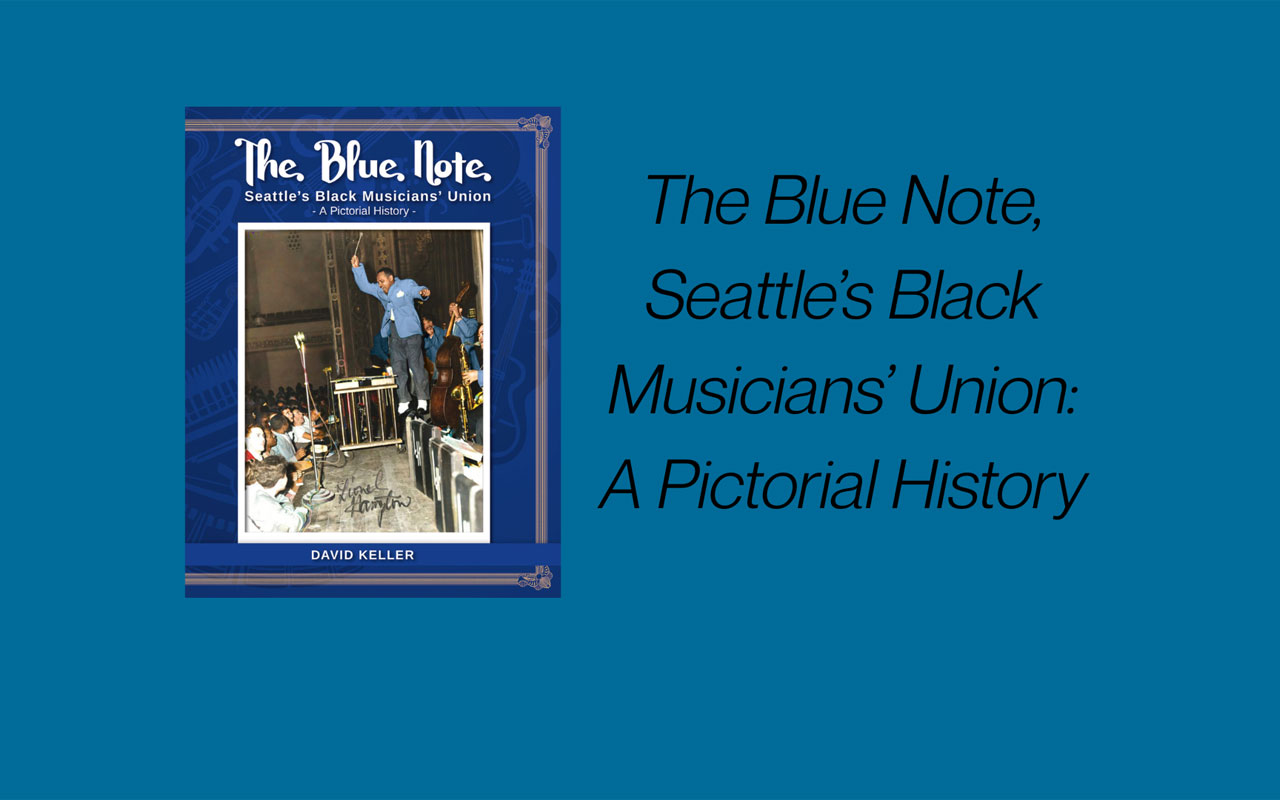
2nd Edition, Distributed by Washington State University Press
Jazz scholar, archivist and former booking agent David Keller has published a handsomely redesigned and somewhat updated edition of his 2013 pictorial history of Seattle Local 493, The Blue Note: Seattle’s Black Musicians’ Union. Much easier to read and more cleanly laid out than the first edition, the new Blue Note has a spanking new color cover featuring Seattle photographer Al Smith’s classic shot of an airborne, baton-wielding Lionel Hampton, as well as new photos of the Gene Coy band (with bassist Alvin “Junior” Raglin, who played with Duke Ellington after he left Seattle) and Seattle guitarist Al Turay, among others. Former Seattle Office of Arts & Culture Executive Director Brian Carter has contributed a new introduction. The text is much more readable, thanks to ample margins and an occasional two-column layout; gone are the mysterious blank pages that popped up in the first edition. Photographic reproduction is improved, though not always. The first edition was printed on glossy stock, which allowed for welcome high contrast to some shots but created a smudgy effect in others. The new matte stock is generally more pleasing to the eye, especially for faded, archivally retrieved photos, but contrast suffers with excellent photos by the likes of Smith.
Keller’s book is not a straightforward narrative history, but rather a parade of 107 photo layouts with face-en-face annotations; the history of the Union is embedded here and there in the annotations. The photos include the main players in this segregated drama, from Union founder Powell Barnett and early star, Edythe Turnham, to more famous 493 members such as Ray Charles and Quincy Jones. Along the way, Keller also includes other folks, some of whom are fascinating, such as early Black Seattle piano teacher Gertrude Harvey Wright and the Filipino band, The Moonlight Serenaders. Others are puzzling, such as white banjo man Eddie Peabody and band leader Paul Whiteman, whose bands were entirely white and have little relation to Seattle beyond the fact that they played here.
History is never written in stone, as new research constantly turns up new information—Keller’s book being a case in point, as it added new detail and correctives to my own Jackson Street After Hours. However, Keller would have benefited from a look at what’s been discovered since 2013. Ashley Harrison’s deep dive into the Black and Tan nightclub, for example, established conclusively that Russell “Noodles” Smith did not open the Black and Tan. The chapbook, Frank D. Waldron: Seattle’s Syncopated Classic, unearthed a wealth of new information about Seattle’s first great jazz instructor, Frank Waldron. And the ease with which one can now browse electronic editions of Seattle publications should have put to rest forever the “question” as to whether blues queen Mamie Smith played Seattle, which the Seattle Post-Intelligencer clearly documented on April 29, 1923. Some flat-out mistakes are repeated here from the first edition, as well, such as the placement of the Golden West Hotel in downtown Seattle (it was in Chinatown).
Overall, however, this is a welcome addition to the ever-growing literature on Seattle jazz history. In the best coffee table book tradition, it’s fun to leaf through for entertaining stories, exotic photos (see shake dancer Zenobia) and curiosities, such as the astonishingly racist poem on p. 19 illustrating early animosity toward jazz.